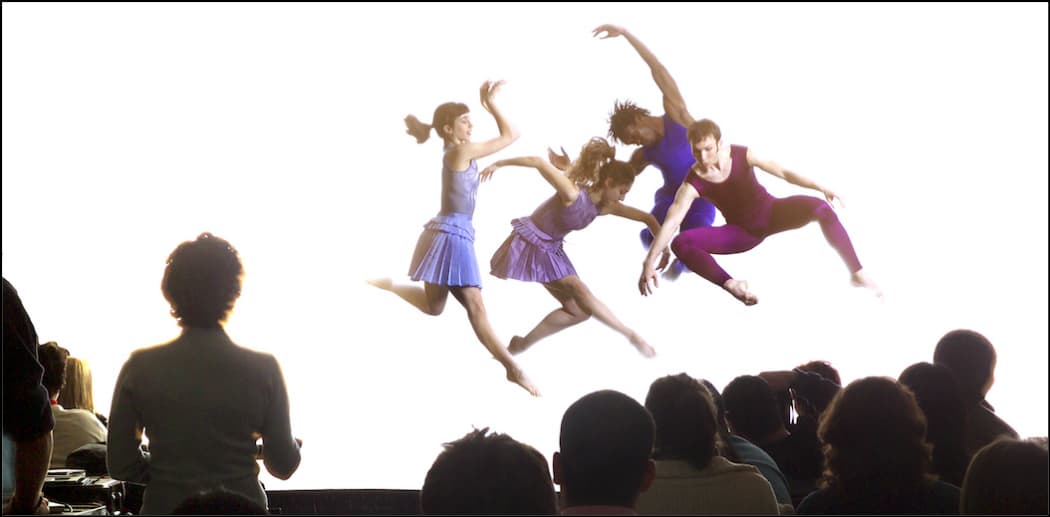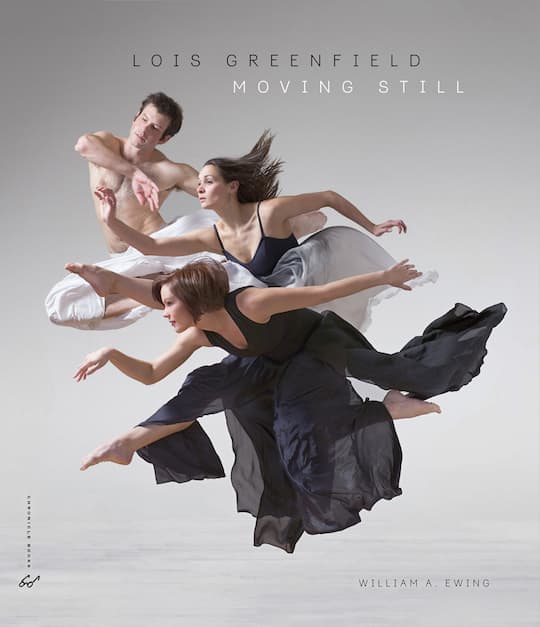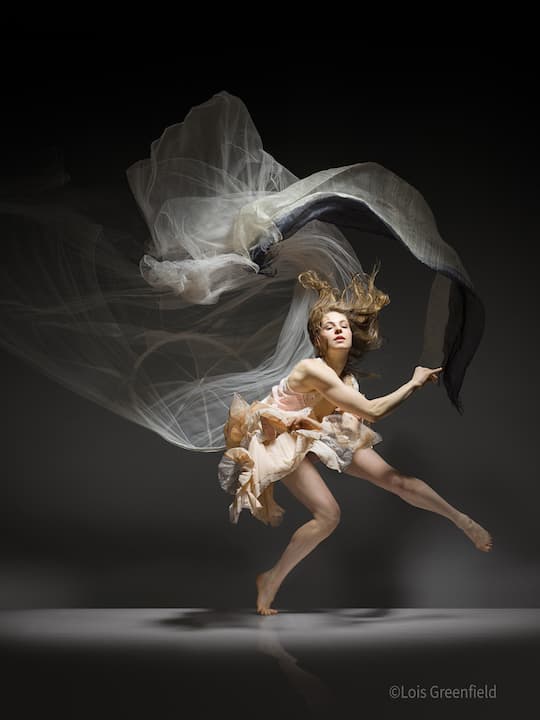Advertisement
In 'Lois Greenfield: Moving Still,' The Photojournalist Captures The Ephemeral

Lois Greenfield has created some of the most arresting movement and dance images ever devised. Dance fans know that her work has spanned more than four decades, and “Lois Greenfield: Moving Still” is a new large-format book (Chronicle Books) celebrating the past 20 years of her photography.

The memorable cover photo is a perfect entryway to this collection: Three dancers swim tranquilly, harmoniously through the air, their black and white skirts dreamily flying with them.
Based in New York, Greenfield reminded me in an email: “I got my start as a photojournalist (for the Real Paper, the Phoenix and Boston After Dark) in Boston, during and after my college years at Brandeis. I also got my start shooting dance in Boston.” But Greenfield’s New York-based career has taken her around the world; she’s made images of many of our era’s foremost dancers and collaborated with the Australian Dance Theatre, shooting segments of the live action as part of the performance.
Nonetheless, most of Greenfield’s work can be classified by its title, “Lois Greenfield: Moving Still.” She addresses the title’s double meaning in the book’s Q&A with curator and photography writer William A. Ewing, who also wrote the preface. “My husband, Stuart, found the title apt because each image is a still picture of a moving person and it is also emotionally moving,” Greenfield said.
Just as the title has a dual meaning, her exceptional work merges the dual art forms of photography and dance. “She has carved out a unique terrain for herself,” Ewing writes in the preface, “in effect fusing two art forms into a hybrid with its own special characteristics. What she shows us in her photographs is not a sampling of something that could be seen onstage ... And the 1/2000th of a second she extracts from it, is happening far too fast for the eye to register.”
Not a conventional dance photographer, Greenfield isn’t in the business of capturing the high points of an existing dance; she brings dancers into her studio and creates photographs using props, lights, fans and whatever else helps her capture an intriguing image. If this suggests to you Harold Edgerton’s stunning and iconic milk drop crown of 1936, you’re in the right stop-action framework. Fast-forward the sensibilities to the 21st century, mix them with the aesthetic sophistication of Lois Greenfield and stir in advanced technology.
But don’t assume that this artist manipulates the images — she does nothing of the sort. She creates a photo using the aforementioned props and costumes for the dancers, but the moment is captured and not altered: This is not digital trickery. Here’s Greenfield’s comment about how people may puzzle over the way the images came about: “I see viewers linger over the photos trying to figure out how it actually happened. They question whether the movement is real. After all, our brain cannot register split seconds; when time is stopped, an ephemeral moment looks as solid as sculpture.”

They look like enchanted fantasies, but there’s more grit and struggle than fairy dust to these images. In one caption, Greenfield describes the process she’s developed: “Although these shots seem to happen spontaneously, a lot of craft goes into their execution. It usually takes at least two or three assistants to wrangle the props, operate the fan, ensure the dancer is in the right spot for the light, and check that the pictures I take are in focus.”
Ewing mentions diverse influences for her work: the painting and sculpture of the Italian Renaissance, and very early photo geniuses like Eadweard Muybridge and Étienne-Jules Marey. But early 20th century photos of Isadora and of Ruth St. Denis, with flowing tunics and outstretched limbs, are somewhere in the root of Greenfield’s work as well.
I wonder whether the age of the drone will introduce an art form to follow Greenfield’s, where art pieces may float across the skies, changing shape with the wind and weather. Meantime, this most recent of Greenfield’s three volumes of photography gives us a map of contemporary creativity, the images captured by a great artist.
Sharon Basco is a journalist, critic and public radio producer.
